
Mercury, Jupiter, Mars, Comets 209P and 2012 K1
Posted: 22 May 2014
Cloudy skies and winds returned again, so lost some nights of observing. On Sunday morning, 18 May 2014, a spaceman appeared near his spaceship:
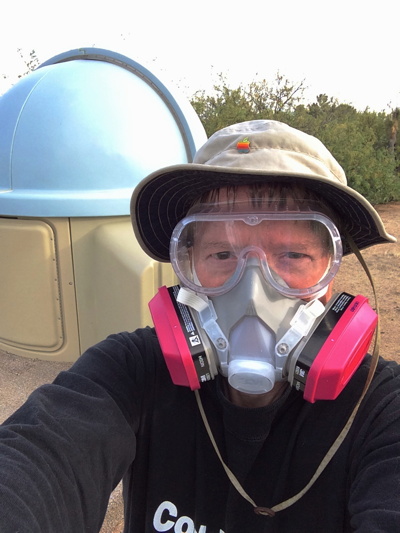
Yes, that's me as I did my annual spraying of pack rat nests to try to reduce the kissing bug population.
|
Opened: Wednesday, 21 May 2014, 1844 MST Temperature: 84°F |
Session: 687 Conditions: Partly cloudy (many Lenticular Clouds), windy |
1859 MST: viewed Mercury, 83X and 222X. Slightly less than half-phase visible. Seeing not very good, but decided to try imaging anyway. Due to the poor seeing, used only short iPhone 5s slo-mo (120 fps) video recordings, afocal 666X + moon filter. This is a stack of 516 frames:

1918 MST: viewed Jupiter, 222X. Three moons visible. The wind was calming down as sunset approached. 1923 MST: sunset.
This Jupiter image is a stack of 2308 frames, 666X:
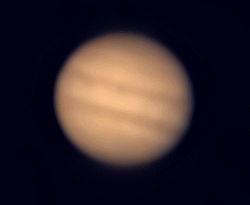
Did some more Jupiter observing, 83X and 222X. Four moons were now visible. This handheld iPhone 5s afocal 222X photo shows the four moons:
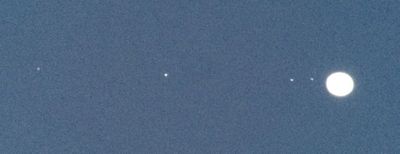
1935 MST: clouds increasing now. 1936 MST: viewed Mars, 222X. Seeing not good, but North Polar Cap and Chryse Planetia (rotating out of view) were visible.
1956 MST: lots of clouds now in south, southeast, east, and northeast, coming in from the south. 2000 MST: switched to 666X + one Variable Polarizing Filter, for Mars imaging using the iPhone 5s once the clouds were away from Mars. 2020 MST: began imaging Mars, slo-mo video. This is a stack 1710 frames:
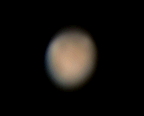
Seeing continued to be not very good. 2029 MST: slewed to Saturn and viewed it at 666X. Seeing not good enough for imaging this session. Using 222X, 4 moons were visible.
2035 MST: no wind now, but still lots of clouds in the sky. Began setting up for D7000 DSLR prime focus imaging of two comets. Added the f/6.3 focal reducer and mounted the camera on the 8" LX200-ACF using the off-axis guider. 2051 MST: waiting for astronomical twilight to end (2056 MST).
After the end of astronomical twilight, but before beginning comet imaging, I did some sky quality measurements at Cassiopeia Observatory. The clouds were mostly gone now and the Zodiacal Light was visible. Dark Sky Meter Pro (iOS app): 21.24. Unihedron SQM-L: 21.04. I suspect some thin clouds or dust were still in the atmosphere, so the measurements were not as dark as they could have been.
2104 MST: focus test image on the star Pollux using a Bahtinov Mask. Then powered on the GC Wi-Fi Adapter and used SkySafari Pro to GOTO Comet 209P/LINEAR (reported Magnitude +14). No guide star was located so did unguided exposures. This is a slightly cropped, single 60 second, ISO 6400, exposure, showing a faint short tail:
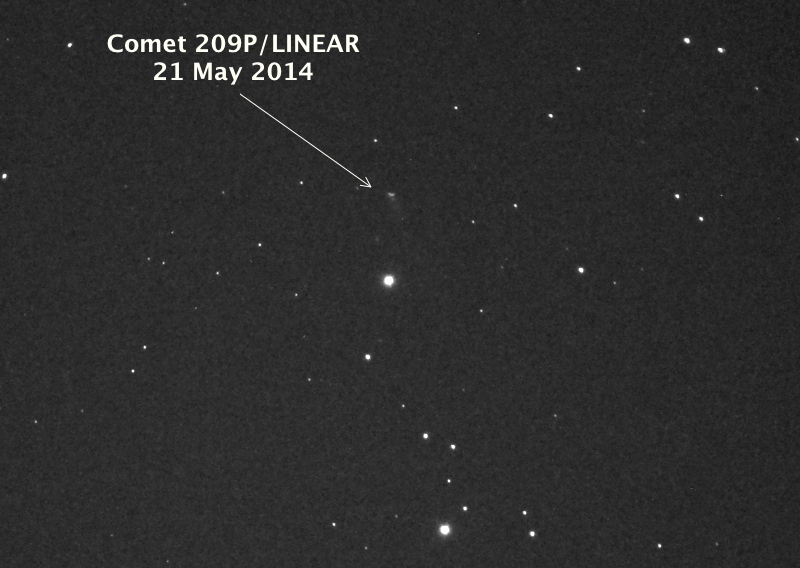
The comet was moving rapidly and the head trailed during the short exposure.
Then slewed to Comet PanSTARRS C/2012 K1 using SkySafari. Again, no guide star was found, so did unguided imaging. This is a slightly cropped, single 3 minute, ISO 6400, exposure:
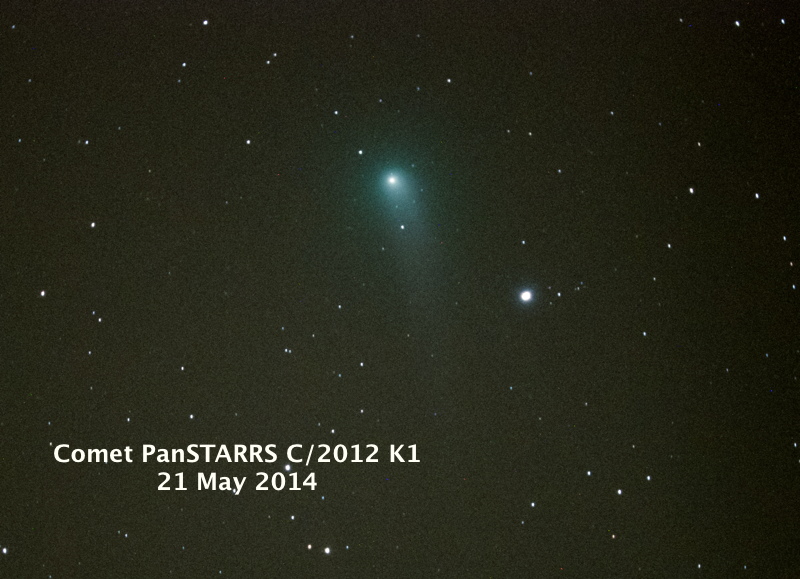
2146 MST: ended comet imaging. 2153 MST: viewed Comet PanSTARRS C/2012 K1, 2" 24mm UWA eyepiece + focal reducer. Coma was obvious; short tail was visible using averted vision.
2159 MST: viewed Saturn 83X and 222X. Still four moons visible. Seeing was a little better now. Then briefly viewed Mars, 222X.
|
Closed: Wednesday, 21 May 2014, 2211 MST Temperature: 64°F |
|
After closing the observatory, I went to Oracle State Park to do some more Sky Quality Measurements to support our "International Dark Sky Park" Nomination Package.
Reminder: The "Camelopardalid Meteor Shower" is this Friday night and Saturday morning. The source of the meteors is Comet 209P/LINEAR.
Comments are welcome using Email. If you are on Twitter you can use the button below to tweet this report to your followers. Thanks.
Cassiopeia Observatory Home Page